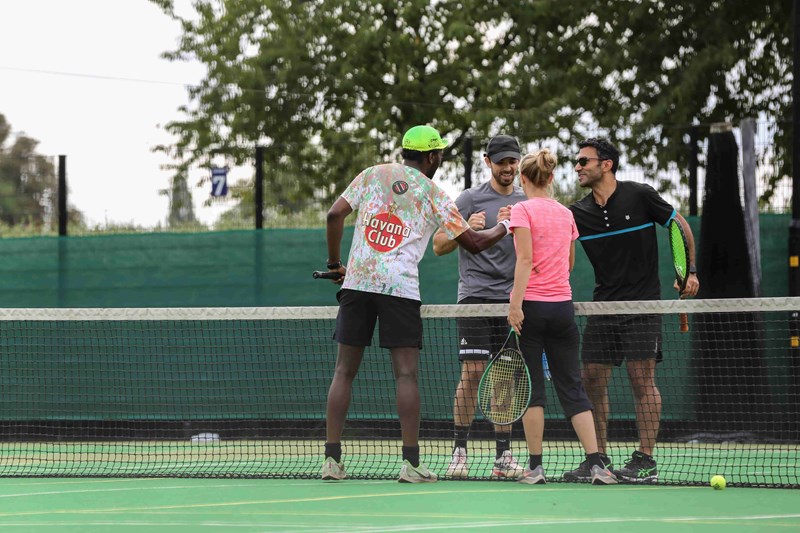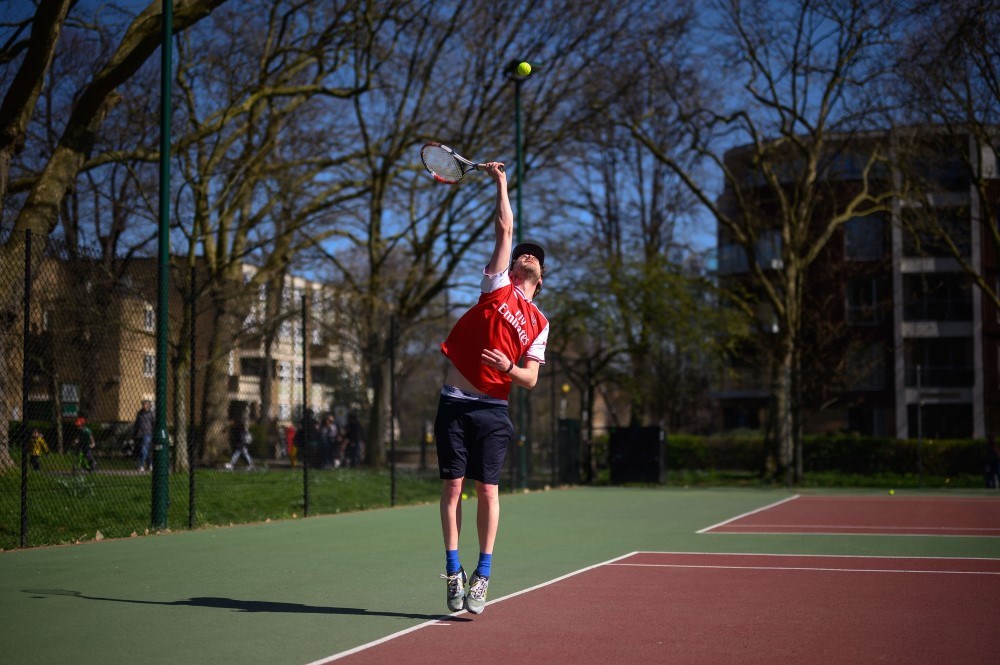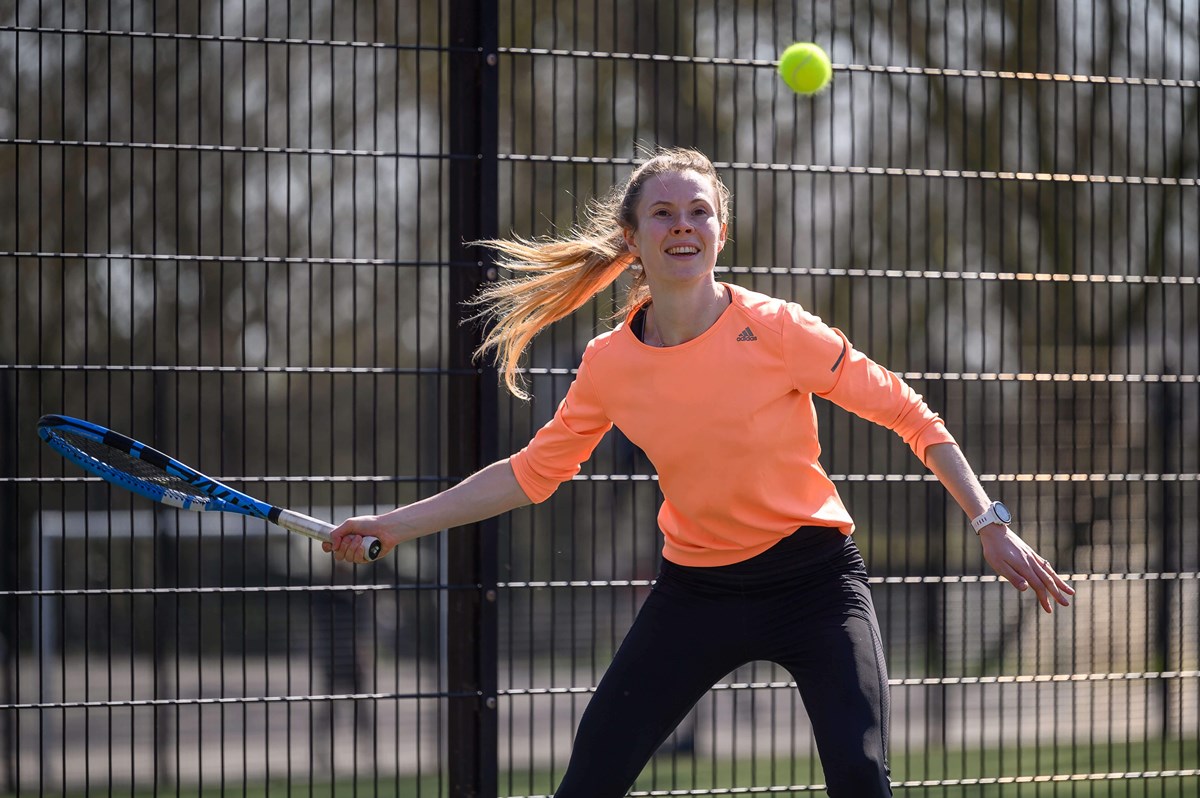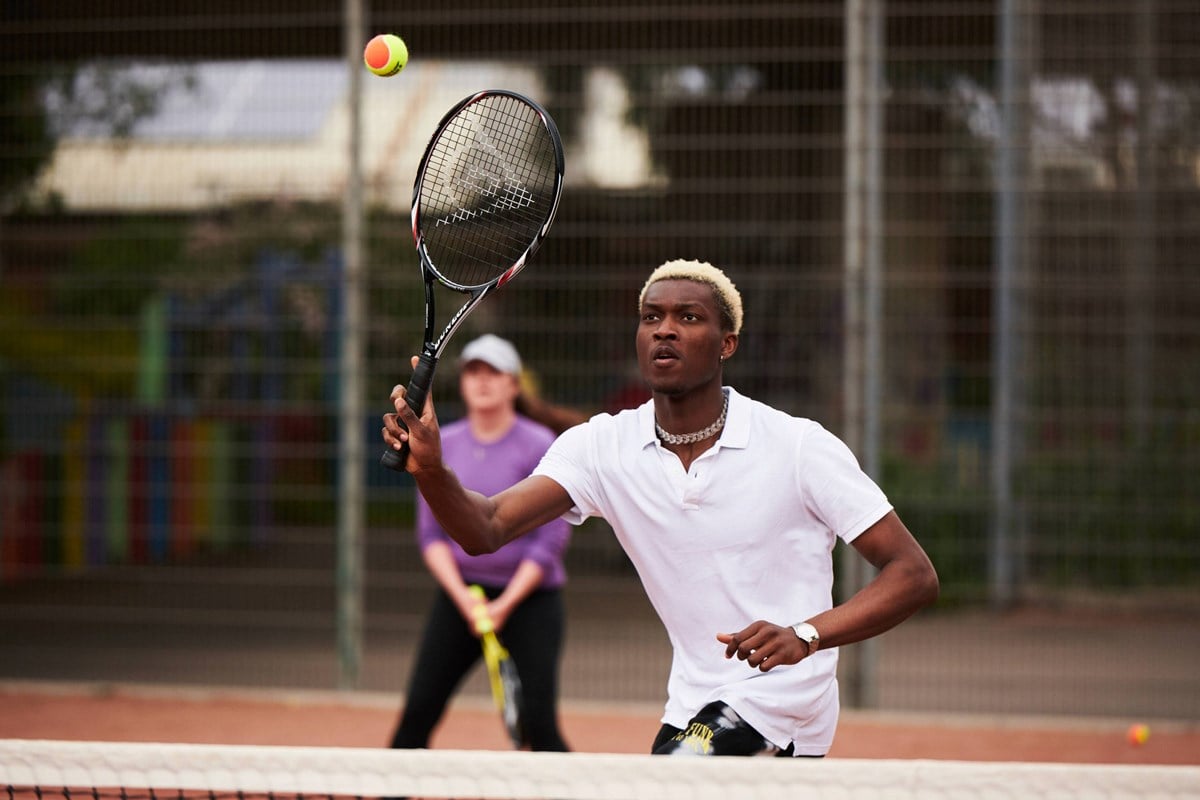Coaching tips
Four easy fixes to help you win more doubles matches

Doubles is the most played form of tennis and if you’re just starting to play more competitively at your local park, club, etc, it’s more than likely that this is where you’ll start.
Whether you’re looking to play more regular doubles or have recently joined a league – LTA Accredited Level 4 Coach and doubles specialist, Sophie Cockell, shares four easy fixes that will instantly improve your game and results if you’re just starting out.
1 – Know where to stand
It may sound obvious and very simple, but understanding how to start a point properly can make a huge difference to whether you win or lose. You’d be surprised how often people get this wrong!
When your partner is serving, most of the time people will immediately gravitate towards the net and standing in the tramlines – often because their partner is serving too close to the tee.

When the ball is served and the ball is now opposite you, you should be directly in the middle of the service box – not including the tramline. This gives you the flexibility to move to different areas, cover more of the court and making it harder for your opponents to lob you.
Then when you’re the server, try standing about two foot from the tramline, not in the usual singles position closer to the tee. This not only gives your partner more space, but it gives you more options on the angle of your serve.
If you're the returners partner, you want to be standing at the back of the service box in the centre. This means, if the returner doesn't hit cross court you're still able to defend the middle of the court.
2 – Return to the baseline
The two most important shots in tennis are your serve and your return – especially in doubles. Where you place your return will often set the tone for the rally and will either get you in the point or have you on the backfoot straight away.
When you’re faced with the return, the general rule is, hit down the line if you're sure it's not going to come back, othrwise, keep it cross court. Going cross court will keep the rally going from the baseline, stopping them from coming in, and it allows your net player to move into a more positive position in the middle of the service box.
You want to keep it away from the net player as much as possible and not give them a chance to come in and play a killer volley straight away.

3 – Cover the middle
The centre of the court is the key area to control in doubles.
I always say to people, imagine the court is about a foot smaller and keep your position inside. If they can hit passed you on the outside, then great shot to them – but usually this is a much lower percentage shot as they are hitting over the highest part of the net.
This means you cover the easy shots and force them to play the harder ones – more often than not, they’ll start making mistakes and you’ll get easy points.
This is important for net players especially, they should be careful not to be too close to their tramline.
4 – Get to the net
One of the easiest ways to win when you’re first playing doubles is simply to get to the net with your partner. Being at the net will limit your opponent’s options and force them to play awkward shots to get passed you – so as soon as you get a short ball, keep going to the net.
If you try to move back to the baseline in this situation, you’ll be off balance and it will give your opponent the advantage, when you could turn it into a much more attacking position.

People always thinking you should be side-by-side and really close to the net, but that’s not the case. You should be staggered with your partner – to cover a potential lob – and stood right around the service line.
Players often think that’s a bad position because in singles it’s called ‘no man’s land’, but in doubles it gives you a lot of options and allows you to cover a greater variety of shots.
The best formation to be in is both at the net against one up and one back. This is a high pressure situation for the baseline and they usually miss it by trying a shot that’s too difficult like a lob or passing shot. This is an easy way to force an error.
Join a Local Tennis League
Friendly, competitive tennis at a park tennis court near you. Join a singles or doubles league at your local park and start playing more great matches.
